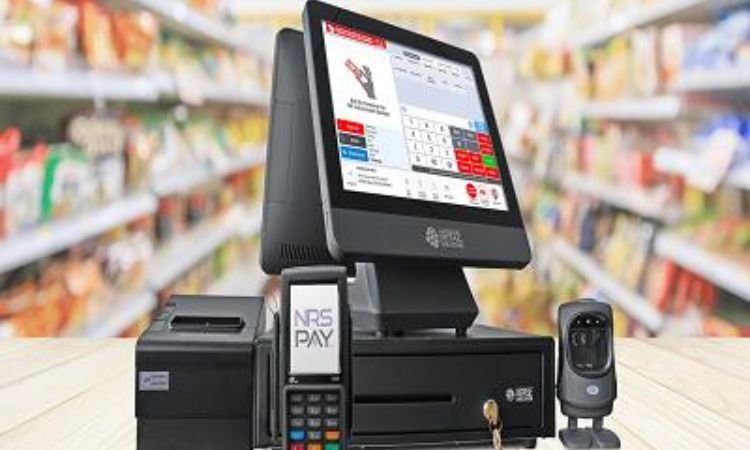
The global point of sale materials (PoSM) market size reached a value of almost USD 35.19 billion in 2023. The market is further expected to grow at a CAGR of 5.6% between 2024 and 2032, ultimately reaching a value of nearly USD 57.39 billion by 2032. This growth reflects the increasing importance of PoSM in driving sales, enhancing customer experience, and adapting to the ever-evolving retail landscape. In this blog post, we will delve into the various segments of the PoSM market, explore key trends, conduct a regional analysis, and evaluate market dynamics to provide a comprehensive understanding of this burgeoning industry.
1. Market Overview
1.1 Definition of PoSM
Point of Sale Materials (PoSM) are promotional tools used at the point of sale to engage customers and encourage purchases. They can be categorized into two main types: Soft PoSM and Hard PoSM. Soft PoSM includes digital displays, electronic shelf labels, and interactive kiosks, while Hard PoSM consists of physical materials such as banners, shelf talkers, and standees. Both types serve essential roles in capturing consumer attention and conveying promotional messages effectively.
1.2 Importance of PoSM in Business Operations
In an increasingly competitive market, businesses must differentiate themselves to attract and retain customers. PoSM not only aids in driving sales but also enhances the overall shopping experience by providing valuable information and creating an engaging environment. As consumer preferences evolve, the strategic use of PoSM becomes more critical for businesses across various sectors.
2. Market Size and Growth Trends
2.1 Current Market Size (2024)
As mentioned, the PoSM market was valued at approximately USD 35.19 billion in 2023. This significant figure reflects a growing recognition of the importance of point-of-sale strategies in enhancing customer engagement.
2.2 Projected Growth (2024-2032)
Forecasts suggest that the PoSM market will grow at a robust CAGR of 5.6% from 2024 to 2032. By 2032, the market is anticipated to reach nearly USD 57.39 billion. This growth will likely be driven by the increasing demand for innovative and effective promotional strategies across various sectors.
3. Market Segmentation
3.1 By Type
- Soft PoSM: This segment is gaining traction due to advancements in technology and the growing importance of digital interactions. Soft PoSM offers businesses dynamic ways to engage customers, such as through personalized promotions and interactive content.
- Hard PoSM: Despite the rise of digital solutions, Hard PoSM remains essential, especially in sectors like retail and food and beverage. Items such as shelf displays and printed materials continue to capture consumer attention effectively.
3.2 By Application
- FMCG: Fast-Moving Consumer Goods heavily rely on PoSM to boost visibility and drive impulsive purchases. Effective PoSM strategies in this sector can lead to significant sales increases.
- Food and Beverage: This sector leverages PoSM to communicate promotions, nutritional information, and brand messaging, enhancing customer experience and encouraging sales.
- Retail: In retail, PoSM plays a crucial role in creating attractive displays and facilitating product discovery, making it vital for both customer engagement and sales performance.
- Pharmaceutical: The pharmaceutical industry utilizes PoSM to provide important information about products, ensuring compliance with regulations while also driving consumer trust and brand loyalty.
- Others: Other applications, including electronics and home goods, also benefit from PoSM, particularly in demonstrating product features and driving conversions.
4. Regional Analysis
4.1 North America
North America holds a significant share of the PoSM market, driven by a mature retail landscape and high consumer spending. The adoption of advanced PoSM technologies, such as digital displays, is prevalent in this region.
4.2 Europe
Europe’s PoSM market is characterized by diverse retail strategies and an emphasis on sustainability. Many companies in this region are opting for eco-friendly materials, responding to increasing consumer awareness about environmental issues.
4.3 Asia-Pacific
The Asia-Pacific region is witnessing rapid growth in the PoSM market, fueled by increasing urbanization and a burgeoning middle class. The rise of e-commerce and omnichannel retail strategies is also driving demand for innovative PoSM solutions.
4.4 Latin America
In Latin America, the PoSM market is expanding as businesses recognize the importance of effective in-store marketing strategies. Economic growth and an increase in retail activities are expected to bolster market development in this region.
4.5 Middle East & Africa
The Middle East and Africa present unique challenges and opportunities for the PoSM market. With a growing retail sector and a young, tech-savvy population, there is significant potential for PoSM growth in these regions.
5. Market Dynamics
5.1 SWOT Analysis
- Strengths: The versatility of PoSM materials allows for customization to suit different brands and customer preferences.
- Weaknesses: Dependence on traditional methods may limit the effectiveness of some PoSM strategies.
- Opportunities: Innovations in technology, such as augmented reality, present new avenues for engaging consumers.
- Threats: The rise of e-commerce poses a challenge to traditional PoSM as more consumers shop online.
5.2 Porter’s Five Forces Analysis
- Threat of New Entrants: Moderate, as the market has established players but offers opportunities for innovative startups.
- Bargaining Power of Suppliers: Low, due to the abundance of material sources.
- Bargaining Power of Buyers: High, as consumers demand more engaging and informative shopping experiences.
- Threat of Substitute Products: Moderate, given the rise of digital marketing alternatives.
- Industry Rivalry: High, as competition increases among PoSM providers to deliver effective solutions.
5.3 Key Indicators for Demand
Demand is primarily driven by changing consumer behaviors, technological advancements, and the increasing importance of in-store experiences.
5.4 Key Indicators for Price
Pricing strategies are influenced by material costs, the complexity of PoSM designs, and the overall marketing budget of companies.
6. Competitive Landscape
6.1 Key Players in the PoSM Market
Major players in the PoSM market include companies specializing in marketing materials, digital signage, and custom displays. Notable names include Testrite, Displays2Go, and 3M.
6.2 Market Share Analysis
The competitive landscape is characterized by a mix of established companies and emerging startups, each vying for market share through innovative products and customer engagement strategies.
6.3 Strategies Adopted by Key Players
Leading companies are focusing on technology integration, such as AI and data analytics, to enhance the effectiveness of PoSM campaigns.



